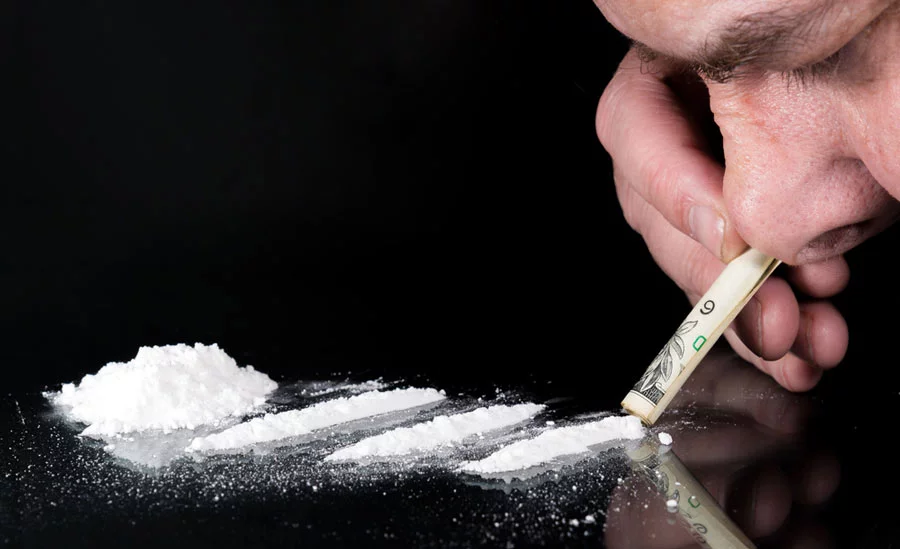Fentanyl Detox
Call Now To Get On The Road To Recovery.
Addiction Treatment that
Just Works
Individualized treatment programs delivered in a comfortable, relaxed setting promote healing in your recovery journey.
*As required by law, all communications with Resurgence Texas are HIPAA Compliant and 100% Confidential
Overcome Fentanyl Withdrawal Symptoms
Fentanyl is a potent synthetic opioid approved by the Food and Drug Administration (FDA) as an analgesic and anesthetic. However, abusing this drug can have devastating impacts on health. According to the Texas Health and Human Services Commission, fentanyl abuse claimed over 1,670 lives in 2021. The need for effective fentanyl detox services in Texas and nationwide has never been greater!
Fentanyl withdrawal can vary widely based on factors such as dosage and duration of use. Luckily, our fentanyl detox program can help you eliminate all traces of the drug from your system to ensure a smooth transition to drug addiction therapy.
If you or a loved one are battling fentanyl addiction, keep reading for more information about effective fentanyl and opioid detox and how Resurgence Texas can help!
How Do People Use Fentanyl?

Fentanyl is often given via injection, skin patch, or lozenges when prescribed by a doctor. Illegal labs are the source of the illicit fentanyl most often associated with overdoses.
Powder, blotter paper, eyedroppers, nasal sprays, and pills that look like legitimate opioid medications are all common forms of distribution for illicitly produced fentanyl.
Fentanyl, like heroin and morphine, acts by binding to opioid receptors in the brain’s reward and pleasure centers, which play a role in processing pain and emotion.
Opioid tolerance occurs when the brain adjusts to the drug, diminishing sensitivity and making it difficult to feel pleasure from sources other than the drug. When a person develops fentanyl, they become preoccupied with obtaining and using it.
How Does Fentanyl Become Addictive?
Prolonged fentanyl use leads to increased tolerance and changes in brain chemistry. When you suddenly reduce intake or stop drug abuse, you may experience fentanyl withdrawal symptoms.
Individual responses to fentanyl depend on factors such as general health and weight, dosage, tolerance, and concurrent drug use.
Fentanyl is commonly used because of its euphoric state and ability to alleviate pain. Common side effects include stomach pain, slurred speech, and dizziness.
According to the DEA, some drug dealers combine fentanyl with other narcotics, including heroin, cocaine, methamphetamine, or MDMA. This is because fentanyl, a synthetic opioid, can produce an effect even in minute doses. Drug abusers may not realize that fentanyl is hiding in their pills. To alleviate their pain, they may consume more opioids than their system can safely handle, leading to opioid overdose.
Why Fentanyl Is Highly Addictive
Fentanyl is highly addictive because of its potency, and there is still a risk of addiction, even when taking fentanyl as prescribed. When a person develops a dependence on fentanyl, they may experience withdrawal symptoms if they suddenly cease using the substance.
Addiction and dependence are not necessarily synonymous; one might be reliant on a substance without being addicted to it. Addiction is the most severe substance use disorder (SUD).
Substance use disorders cause people to seek and use drugs compulsively, which can be hard to control despite the apparent risks. People addicted to drugs keep using even when their habit creates problems in their personal lives, relationships, and careers. The severity of SUD symptoms varies from person to person.
What are the Signs of Fentanyl Addiction?
Signs of fentanyl addiction include:
- Abusing fentanyl by taking more of it or using it more frequently than recommended
- Developing drug withdrawal symptoms after discontinuing use
- Having trouble regulating your fentanyl use
- Feeling obsessed with obtaining and abusing fentanyl
- Using fentanyl despite the adverse effects, it has on your life
- Building up tolerance
These signs might become too much to handle. It’s time to stop using fentanyl if you, or someone you care about, exhibits any of these symptoms. However, it is risky to attempt this on your own.
A physical withdrawal syndrome manifests itself when fentanyl use is suddenly discontinued. This is a typical side effect as your brain attempts to acclimatize to life without the drug. Fentanyl withdrawal symptoms can be potentially life-threatening, necessitating fentanyl withdrawal be made under medical supervision.
What are Fentanyl Withdrawal Symptoms?

Opioid withdrawal symptoms from fentanyl can be mild, moderate, or severe, depending on various factors.
Physical and mental effects of fentanyl withdrawal include:
- Intense drug cravings
- Anxiety
- Fever and chills
- Stomach problems
- Nausea
- Irritability
- Flu-like symptoms like a runny nose
- Trouble sleeping
- Excessive sweating
There are different stages of withdrawal: early, peak, and terminal. As withdrawal from fentanyl progresses through its phases, so do the symptoms experienced by those going through it.
Early Withdrawal Symptoms
Two to four hours after the last dose, these symptoms appear. Mild discomforts such as pains, chills, and excessive yawning are typical. Fentanyl cravings and anxiety are common psychological manifestations of fentanyl addiction.
Peak Withdrawal Symptoms
In most cases, the painful withdrawal symptoms of fentanyl wear off within a week, but they typically begin 24 to 36 hours after the last dose. The symptoms are more severe, and there may be more of them, such as a fever, that require medical attention.
Long-Term Withdrawal
Weeks after medical detoxification, long-term withdrawal may occur, making constant aftercare vital to prevent relapses. In the aftermath of fentanyl withdrawal, cravings and disturbing thoughts are shared. The most common symptoms of long-term abstinence are described below.
- Depression
- Mood disorders
- Self-harm
- Insomnia
Dehydration from fentanyl withdrawal can be avoided with continuous monitoring of fluid levels, even though most withdrawal symptoms are not life-threatening. Sudden fluid loss can cause salt accumulation, which can cause heart failure if not treated.
Our treatment center offers medically supervised withdrawal services, so call us at 888-231-2269 now to speak to a team member.
Addiction Treatment that
Just Works
Individualized treatment programs delivered in a comfortable, relaxed setting promote healing in your recovery journey.
Managing Fentanyl Withdrawal Symptoms
After using fentanyl for over two weeks, you should discuss creating a withdrawal plan with your doctor. Due to the severity of opioid withdrawal, medical supervision throughout detox is recommended. Clients may need to take extra medications to reduce the severity of withdrawal signs.
Tapering Fentanyl Doses
Tapering is when you gradually reduce the amount of fentanyl you take until you no longer need the drug. Your doctor can help you create a schedule for progressively decreasing your dosage over several weeks or months.
Medical professionals will monitor your vital signs and symptoms during tapering. You may be asked to produce blood samples to determine the fentanyl concentration in your blood.
Consulting a mental health expert will help you cope with the emotional distress associated with withdrawal. Changing your behavior can positively impact your psychological and physical health.
The following are some suggestions that may aid in your recovery from withdrawal:
- Maintenance of a nutritious diet.
- Drinking enough water throughout the day.
- Mindful practices like meditation and encouraging relationships.
- Exercise should be kept at a moderate level.
- Recreational activities
If you experience severe pain to warrant the use of fentanyl, your doctor may recommend various pain management strategies.
Medical Detox for Fentanyl
Fentanyl withdrawal symptoms are treatable with withdrawal management and medical detox. Medical detox is the initial step in treatment and has many advantages.
Fentanyl Detox Benefits
Benefits of fentanyl detox include:
- Reducing withdrawal symptoms
- Enabling doctors to detect potential health issues beforehand
- Formulating comprehensive plans for treating opioid addiction
- Taking preventative measures to reduce the possibility of relapse
- Treating fentanyl dependence
Those committed to getting sober can enter an inpatient or outpatient facility for medical detox. The individual’s home life and the severity of their withdrawal symptoms will determine the best location for therapy.
Depending on the individual, fentanyl detox might take anywhere from a few days to a few weeks. The amount, frequency, and length of use, as well as the strength of the fentanyl utilized, are only some factors contributing to the severity of symptoms.
The adverse effects of fentanyl are often reversible with medical detox. Once the detox process is complete, the body can return to normal, and you can focus on drug rehab.
Fentanyl Overdose
An overdose is when a substance produces potentially fatal adverse effects. A fentanyl overdose can cause reduced or halted breathing, resulting in hypoxia that limits the oxygen supply to brain tissue. The lack of oxygen or hypoxia may cause a coma, permanent brain damage, and even death.
Drug traffickers usually mix fentanyl with other substances to increase their earnings, making it difficult to tell which drug caused an overdose.
Fentanyl Detox Medications

Fentanyl withdrawal symptoms can be mitigated, and cravings can be controlled using safe and efficient methods.
Doctors usually prescribe medications not just to help with the discomfort of withdrawal but also to aid in long-term control of cravings, sobriety from prescription and illicit opioids, and reduced overdose risk.
Below are the most commonly used drugs in a fentanyl detox program:
- Methadone: This opioid agonist stimulates the same brain receptors as fentanyl but cannot produce the same type of high. Instead, methadone suppresses cravings and reduces withdrawal symptoms if taken as directed.
- Buprenorphine: Like fentanyl, this partial opioid agonist binds to and partially activates opioid receptors. This reduces withdrawal symptoms and drug cravings.
The non-opioid medication, lofexidine hydrochloride, can also reduce the intensity of withdrawal symptoms, making it easier to stop using fentanyl.
Get Help for Substance Abuse and Fentanyl Now
Seek help immediately if you or a loved one is experiencing problems with fentanyl abuse or addiction. The rise in overdose deaths due to fentanyl means that now is the right time to consider getting clean and finding recovery.
Contact Resurgence Texas to speak with our professional team about fentanyl detox and treatment. All calls are completely confidential and discreet, and we will address any concerns or questions you may have about seeking help. Reach out and start down the path of a new life without opioids now!
Addiction Treatment that
Just Works
Individualized treatment programs delivered in a comfortable, relaxed setting promote healing in your recovery journey.
